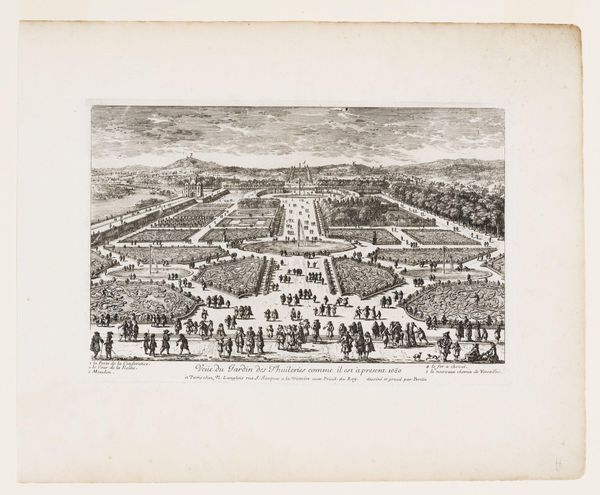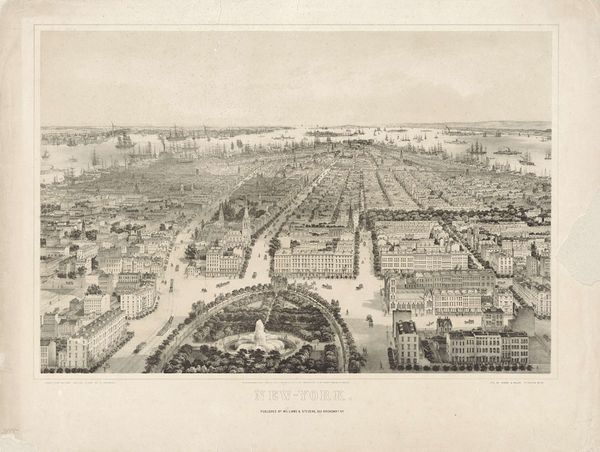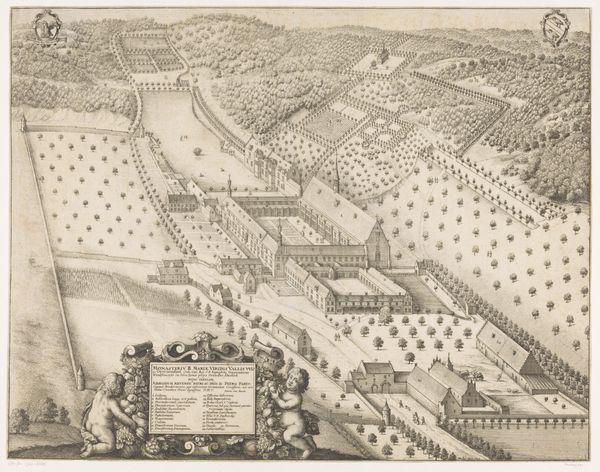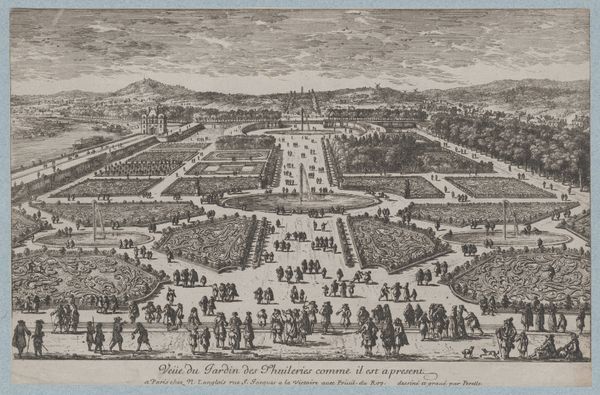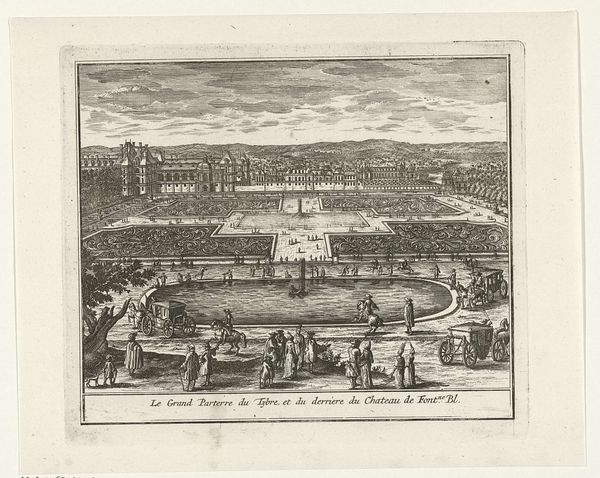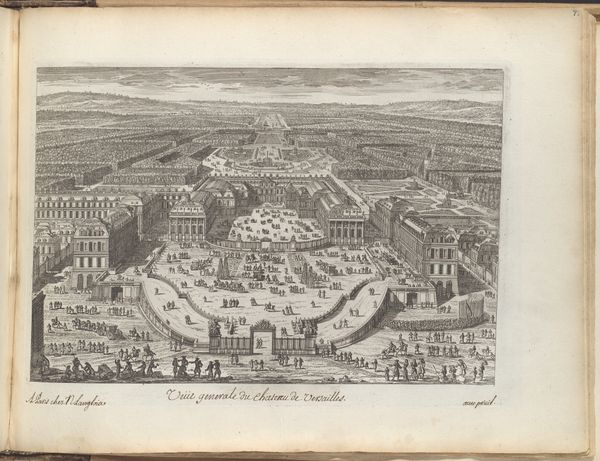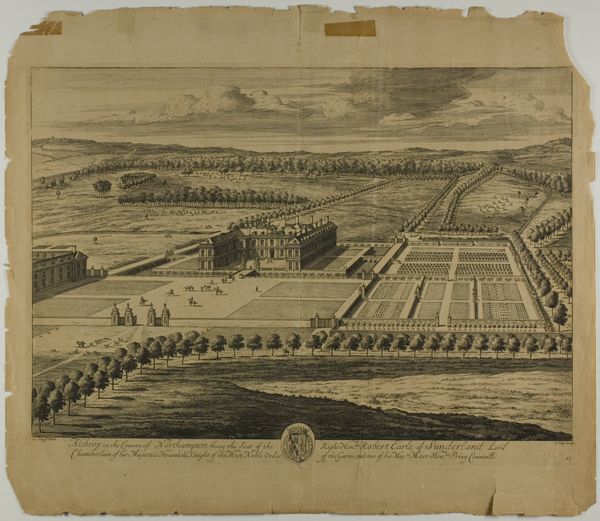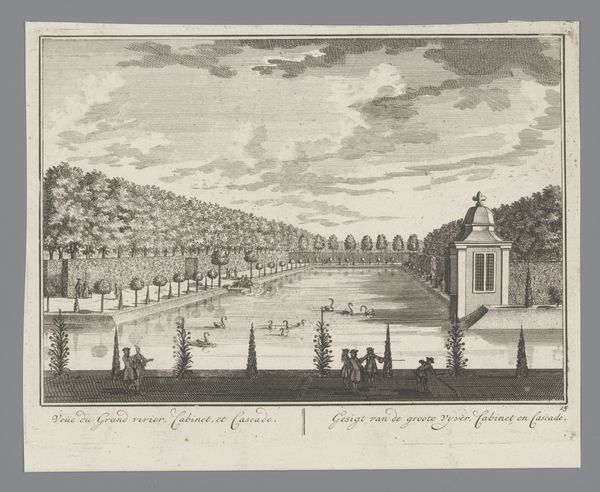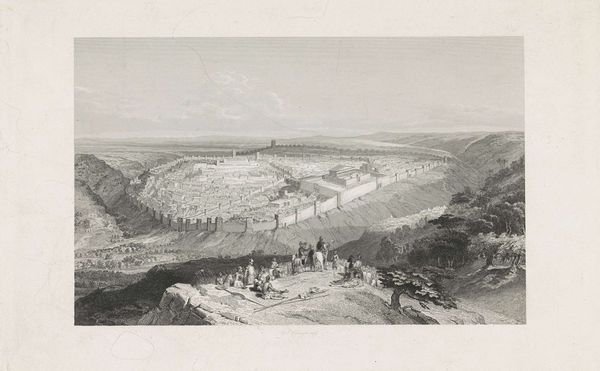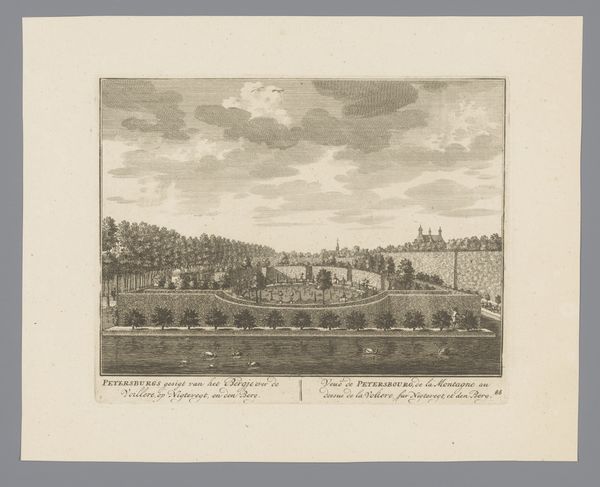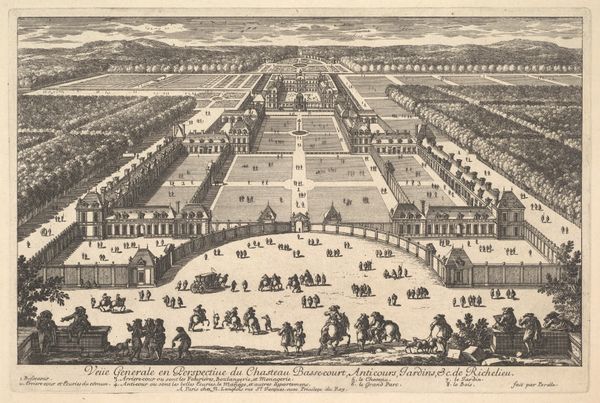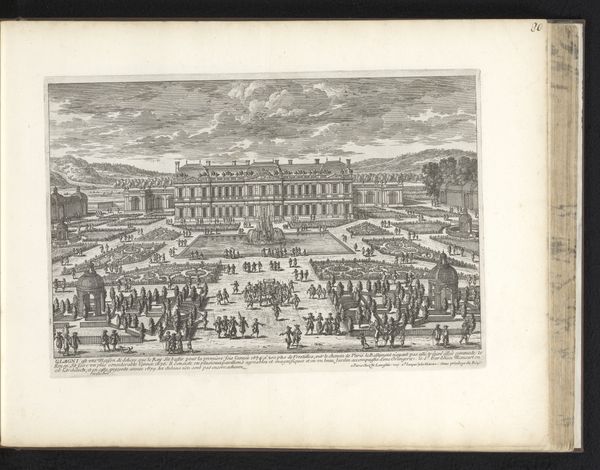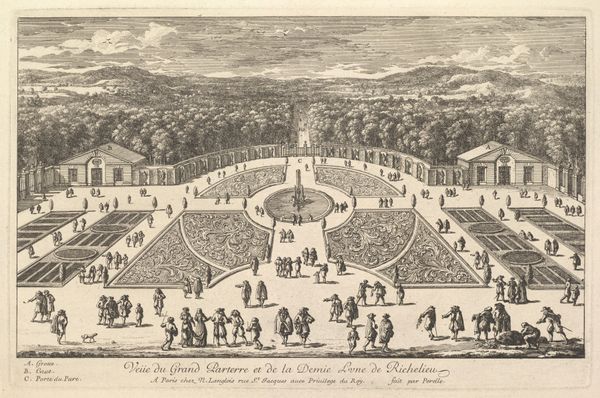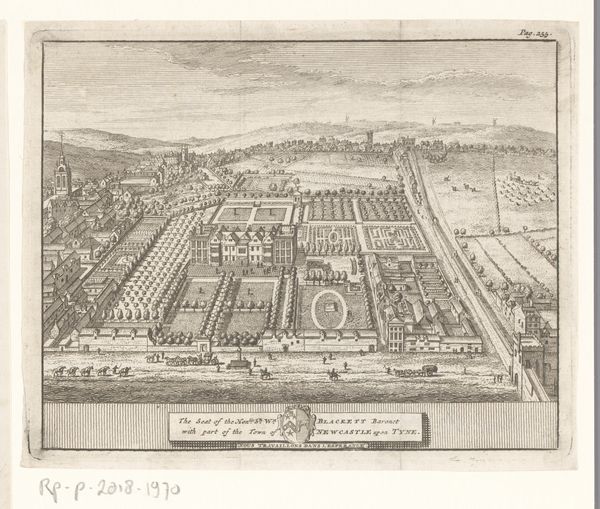
print, etching
# print
#
etching
#
perspective
#
cityscape
#
history-painting
#
italian-renaissance
Copyright: Public domain
Editor: This etching, "Perspective of New Square in Padua," by Giovanni Battista Piranesi, really pulls you in with its vastness. It feels almost like a stage, bustling with tiny figures. How do you interpret this work? Curator: The ‘stage’ you identify is astute. Look at how Piranesi orchestrates our gaze. The vast perspective isn't merely about showing the square, but about presenting a world, a complete vision imbued with a historical and cultural memory. What visual elements stand out to you, and how do they speak to this ‘memory?’ Editor: I'm struck by the symmetry, the ordered placement of monuments. It feels deliberate, maybe even idealized, considering it's a city scene. Curator: Indeed. This isn’t a mere recording, but an encoding. The carefully arranged structures, the idealized symmetry... these reflect the Renaissance pursuit of order, harmony, and a retrieval of classical grandeur. Consider the placement of people – are they individuals, or types? How does that play into the 'memory' we're discussing? Editor: They seem more like types. Part of the backdrop, emphasizing the square's function rather than their own stories. Curator: Precisely. Piranesi is using them to populate a vision. He calls forth the era's desire to not just build but to curate experience. The square isn’t just a space; it’s a stage for civic life, for displays of power, wealth, and aesthetic ideals. How does that inform our modern understanding of urban spaces? Editor: I hadn't thought of it as curated experience before, but I see what you mean. It shifts my perception from just seeing a city to seeing a constructed idea of one. Curator: It is this layering of perspective and encoded meaning that grants Piranesi's work such lasting cultural resonance. Each etched line embodies more than just spatial rendering; it preserves aspirations, ideologies, and the collective self-image of an era.
Comments
No comments
Be the first to comment and join the conversation on the ultimate creative platform.
